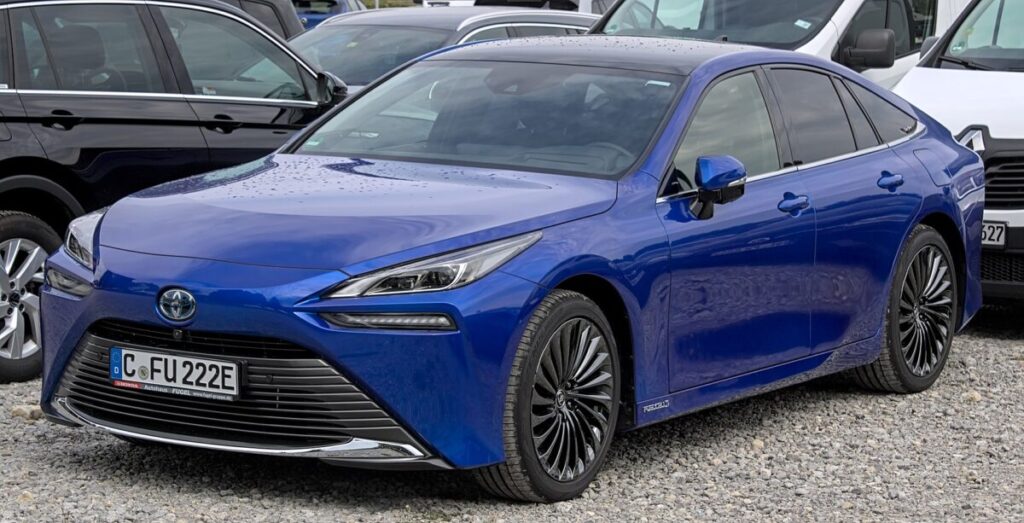Scientists at Sweden’s Chalmers University of Technology have modeled low platinum (Pt) fuel cells for use in hydrogen fuel cell vehicles (FCVs). They based their work on previous experimental findings on low-charging Pt catalysts to approach the automotive application of the development.
“This [is] It is a modeling work, and from modeling to actual application there are many challenges to consider, such as whether these or similar catalysts can be produced on a large scale,” corresponding author Tatiana Santos Andrade told us. pv magazine.
In hydrogen fuel cells, Pt is used as a catalyst material in the cathode that is supplied with oxygen while making electric current. Commercialized FCVs, such as Toyota Mirai, use 0.31 mg/cm2 Pt at the cathode, while experimental researchers have been able to reduce this to 0.01 mg/cm2 at the cell level.
“The amount of platinum is considered the bottleneck for the distributed commercialization of fuel cells,” the research group explains. “It is indicated that platinum is responsible for approximately 40-55% of the total cost of the stack fuel. Due to the low kinetics of the oxygen reduction reaction taking place in the cathode, the current Pt load on that electrode is the critical design component, accounting for approximately 85% of the total platinum of the fuel cell stack.”
In their analysis, the team scaled up four types of low-charge fuel cells from the literature: two with 0.033-0.035 mg-Pt/cm2 and two with 0.01 mg-Pt/cm2. The systems were named E1 – 3.3 Pt, E2 -3.5 Pt, E3 – 1.0 Pt and E4 – 1.0 Pt, respectively. E1 and E2 were grouped as low-loaded Pt catalysts, while E3 and E4 were ultra-low-loaded Pt catalysts.
“The first two are catalysts consisting of platinum-cobalt core-shell nanoparticles in a platinum-free catalytic substrate with a slightly different Pt charge,” the academics pointed out. “The last two are channeled mesoporous carbon particles (CMC) with PtFe with a slightly different porous channel.”
Based on the energy efficiency curves of those cells, the researchers were able to scale them up to stack and system level and compare them with the Toyota Mirai. The Mirai has 370 cells with a surface area of 237 cm2, a maximum power of 114 kW and a cathode Pt load of 0.31 mg/cm2. The researchers compared the commercial system with two models: one in which the low-Pt fuel cell system has the same stack size, of 370 cells, and the other with the same maximum power of 114 kW.
In the same stack size scenario, the researcher found that E1 had a maximum power of 62-68 kW, E2 70-77 kW, E3 48-53 kW and E4 45-49 kW. Although their power reached at best 52% of the commercial system, the fuel cell systems with low charged Pt catalysts showed higher efficiency at lower power.
“When a power (product of voltage and current) relationship is established, it highlights the high variation in efficiency at high power values for samples E1-E4,” the scientists said. “The more dramatic drop compared to the commercial FCV stack indicates that these materials showed less stable performance across different power ranges.”
In the second model, when the same power was targeted, E1 required 623-677 cells, E2 552-600, E3 795-864 and E4 860-935. “If only the Pt amount is considered, even with the increased number of cells, the samples would still represent a Pt reduction of 81%, 82%, 93% and 92% respectively compared to the commercial FCV for samples E1 -E4. . It can reduce stacking costs by about 27-45%,” they pointed out.
Based on these results, they modeled the system in an FCV and simulated it with the Worldwide Harmonized Light Vehicles Test Procedure (WLTP). The car had a battery with a state of charge (SOC) of 20%-95%, a 4 kg hydrogen tank and a control strategy that switched between the fuel cells and the battery when necessary.
According to their results, the power requirement of the fuel cell in the commercial vehicles and the E1-E4 cases according to the WLTP test is always lower than 40 kW. Therefore, all models were able to deliver competitive results compared to the 628 km range of the reference car.
Under the same rack size, E1 had a range of 646 km-651 km, E2 had 641 km-646 km, E3 had 632 km-638 km and E4 had 617 km-623 km. When optimizing the same maximum power, E1 had a range of 662 km-665 km, E2 had 654 km-656 km, E3 had 632 km-638 km and E4 had 646 km-647 km.
“When developing catalysts, researchers are typically focused on improving maximum power, which is a relevant metric to consider, while the entire fuel cell efficiency profile, for example at lower to mid-range power, is usually overlooked,” Andrade said. “That can be a relevant factor in making the fuel cell suitable for vehicle applications, because the fuel cell is usually too large for a vehicle. I hope this article can function as a bridge between materials science research and vehicle implementation.”
Their findings were presented in the article “Low platinum fuel cell as a catalyst for the hydrogen fuel cell vehicle”, published in the Power Sources Journal.
This content is copyrighted and may not be reused. If you would like to collaborate with us and reuse some of our content, please contact: editors@pv-magazine.com.

